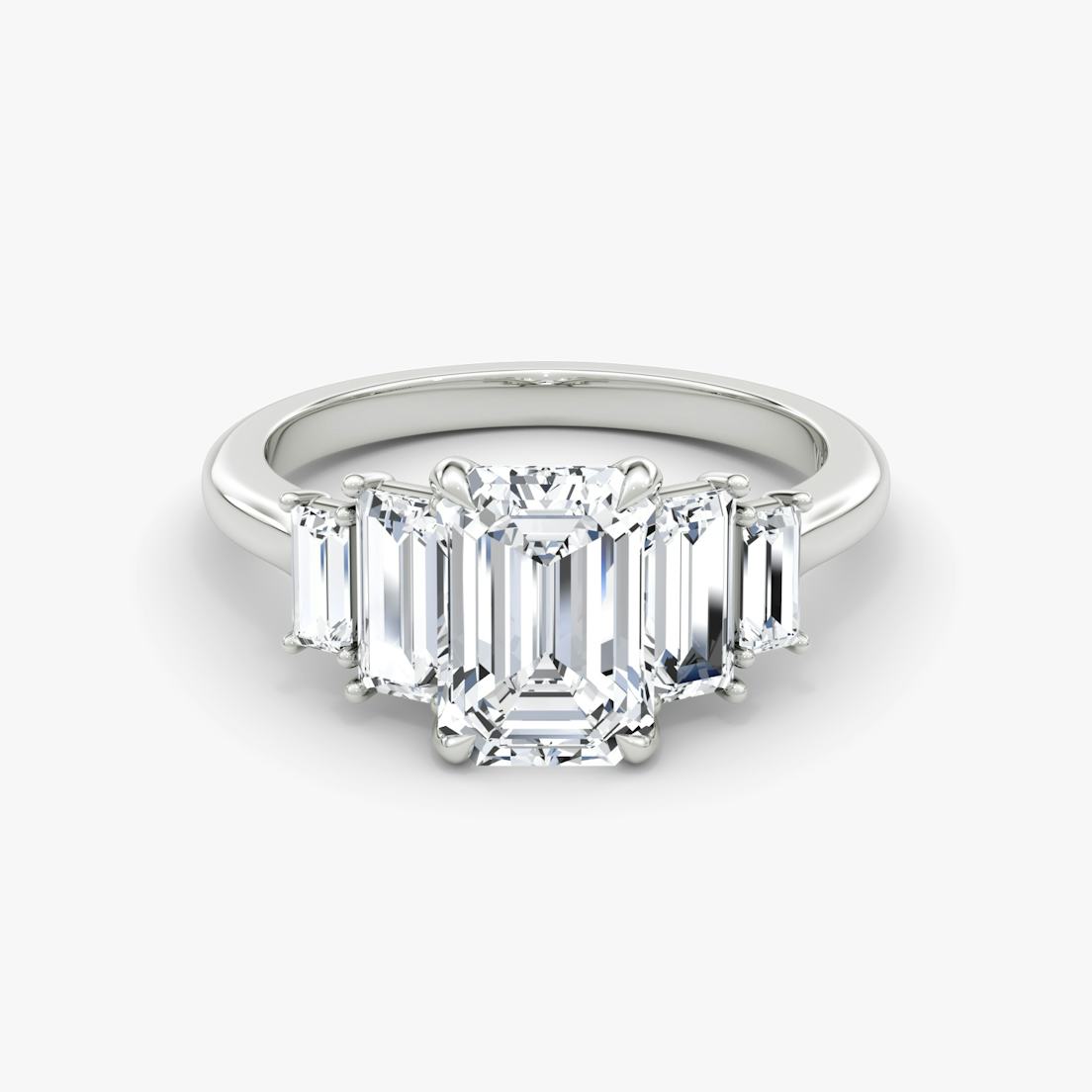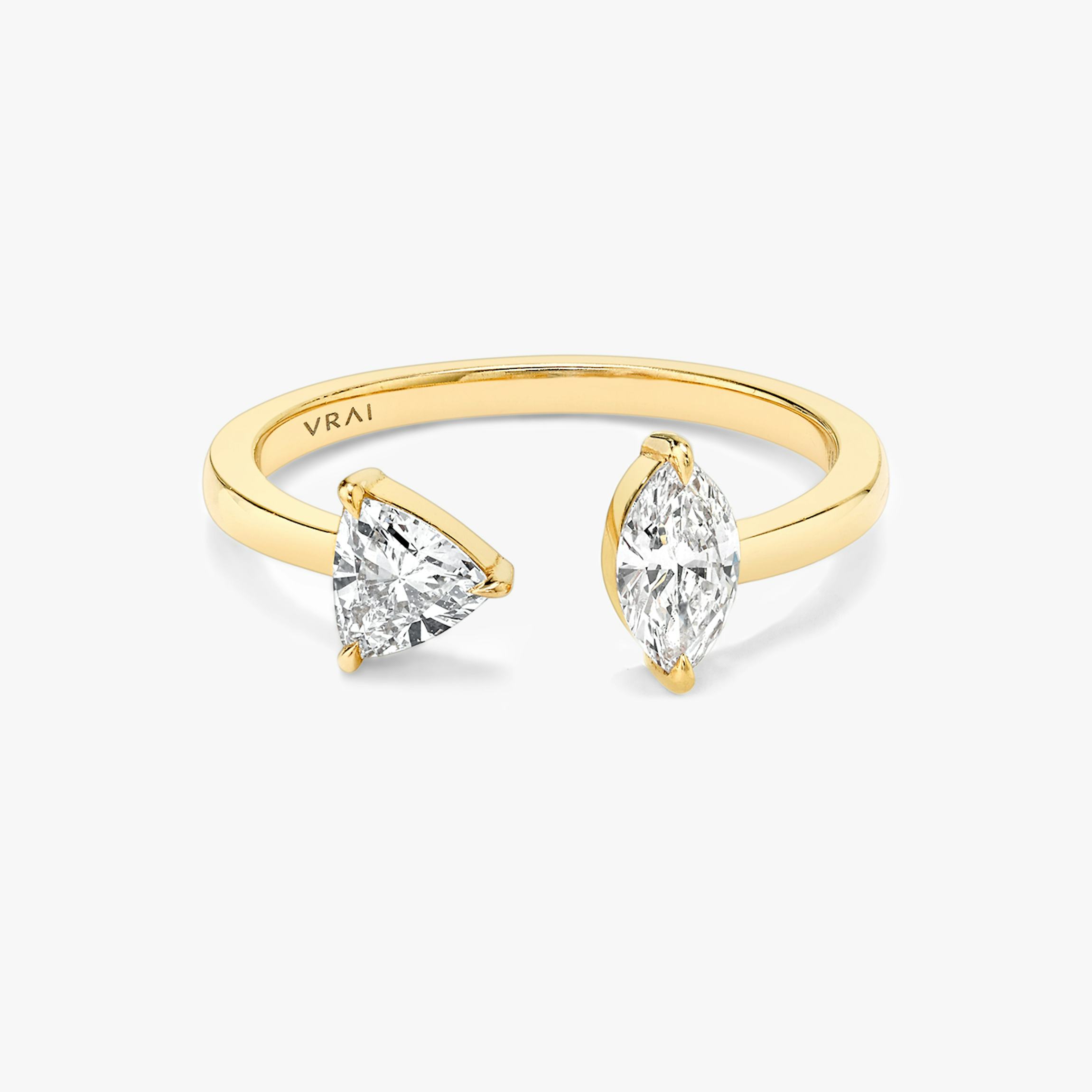How to Measure Ring Size: A Simple Guide


Our evaluations and opinions are not influenced by our advertising relationships, but we may earn a commission from our partners’ links. This content is created by TIME Stamped, under TIME’s direction and produced in accordance with TIME’s editorial guidelines and overseen by TIME’s editorial staff. Learn more about it.
Whether you’re gearing up to buy an engagement ring, promise ring or interested in resizing a family heirloom, it can be tough to move the ball forward on any ring-related shopping endeavor without knowing your ring size. Although you could always make a trip to your local jeweler for sizing, there are a bevy of simple ways to measure your ring size at home with tools you may already have. To ensure that the next ring you purchase fits beautifully, take a look at the following tips.
It’s possible to measure ring size using an everyday piece of string or even floss. To do it, cut a generous length of floss or string, and wrap it around the base of the ring finger you plan to wear the ring on. With a pen, create a mark where the material initially overlaps. Unwind the string from your finger and lay it out flat where it can be measured. Then, using a ruler or measuring tape, gauge the length in millimeters, then match the measurement with the ring sizes on the below chart.
Using a tape measure will get you an especially accurate read on ring size. Just, take a measuring tape and wrap it around the base of the ring finger that you plan to wear the ring on. You’ll also want to be sure that you haven’t wrapped it too tightly or loosely. For example, it’s too loose if the tape measure can slip past your knuckle. Then, take note of the number of millimeters where the tape overlaps on your finger, and compare it to the ring sizes on the chart.
Yes, you’ll need special equipment for this one: A ring sizer, which can look like a specialized measuring tape (like this ring sizer on Amazon) or a bunch of small metal loops on what looks like a key chain (like this finger sizer, also on Amazon). Tape-style sizers wrap around the finger and show you the appropriate ring size. Metal loop-style sizers involve you pushing your finger through each loop to see what fits best. Tip: Some jewelry stores, like Brilliant Earth or Blue Nile, will send you a ring sizer for free.
If you have a ring you already wear that fits well, you can use it alongside a ring chart to measure ring size. There are a variety of downloadable, printable ring charts online (such as this one from Kay Jewelers) that illustrate a variety of ring sizes. Just hold the existing ring up to each size until you find a match and you’re done.
If you don’t have a string or tape measure, you can print out a ring sizer (check out this one from Blue Nile), purchase a ring sizer on Amazon (there’s one as affordable as $4), or visit your local jeweler who can use a metal ring sizer to accurately pinpoint your ring size.
When exploring ring size, you’ll want to bear the following basics in mind: Standard U.S. ring sizes range from ring size three to 13.5 for adults. Women’s ring sizes generally range from size three to 14 and the average is five to seven. Men’s ring sizes typically range from eight to 14, and the average is between 10 and 11.
Ring sizes correlate to a finger’s width in millimeters. For starters, a ring size three fits a finger that measures 14 millimeters, and for every half-size after size three, the measurement jumps by .4 millimeters.
Consider the following must-knows ahead of diving into ring sizing.
You’ll do well to measure your finger several times—say, three times is the charm—to be sure you’ve done it correctly and zeroed in on the right number.
Use a material that doesn’t have any stretch to it. In other words, a rubber band or hair tie isn’t going to be the best way to gauge ring size. Instead, go for twine, floss, ribbon, and similar non-elastic materials that won’t be as apt to lead you astray.
Because a ring size measurement will of course vary based on where you put the material you’re using, be sure you wrap it precisely where you’d like your ring to sit on your finger.
Because fingers often swell overnight, it’s best to measure your ring finger around midday as opposed to first thing in the morning.
It might seem like a no-brainer, but a variety of activities—from going for a run to jumping in a hot shower or spending time out in the cold—can cause fingers to swell or contract. This, obviously, can throw off ring size.
If you’re hoping to measure your partner’s finger ahead of surprising them with a stunning engagement ring or another eye-catching gift they can flaunt on their ring finger, you’ll want to pinpoint their ring size discreetly. If that’s the case, you’ll want to:
See if your significant other’s closest friend, sibling or parent is able to weigh in on their ring size. If they don’t know it, they could potentially suggest trying on rings for fun and sneak sizing into the agenda.
If you can easily borrow a ring that currently fits your partner, you can use it to size their finger by comparing it to the sizes on a downloadable ring chart or taking it into a jeweler.
When in doubt, you can always guess your partner’s ring size, erring on the larger side. If it is too big, your local jeweler can resize it easily, whereas if it is too small, adding more metal to size up will be a bit more difficult—and potentially pricier.




You can measure a man’s ring size the same way as any other—however, just note that you’re using the right ring size chart, as men’s rings offer higher numbered sizes. Use one of the aforementioned measurement guidelines and you’re ready to go.
When choosing the carat weight of a diamond or gemstone ring, you may want to take your own or your partner’s ring size under consideration. In general, the smaller your ring size, the larger any stone will appear. For example, if your significant other’s ring finger is a size 4.5, a 1.5 carat stone will look larger than if her ring was a size 6.5.
But other factors might be even more important than ring size when deciding on diamond or gemstone size. For instance, think about the ring wearer’s personal style and lifestyle. Perhaps, if they’re more active and tend to not wear jewelry on a daily basis, a smaller stone is a better bet, whereas if they have an extensive jewelry collection, they might appreciate a larger stone.
If you end up buying a ring that’s the wrong size, you can always get it resized by a professional jeweler. If you’re concerned that you haven’t pinpointed an accurate size, it is best to err on the larger side, as you can then opt for resizing. Going from larger to smaller is always the easier—and more affordable—option.
Band thickness does affect ring size. The wider the band, the larger the ring will need to be to fit properly, whereas the thinner the band, the smaller it will need to be to fit. For this reason, you’ll do well to try on the exact ring you’re hoping to size or a similar style.
The average ring size for women is between a size 5 and a size 7.
The average ring size for men is between a size 10 and a size 11.
The information presented here is created by TIME Stamped and overseen by TIME editorial staff. To learn more, see our About Us page.



